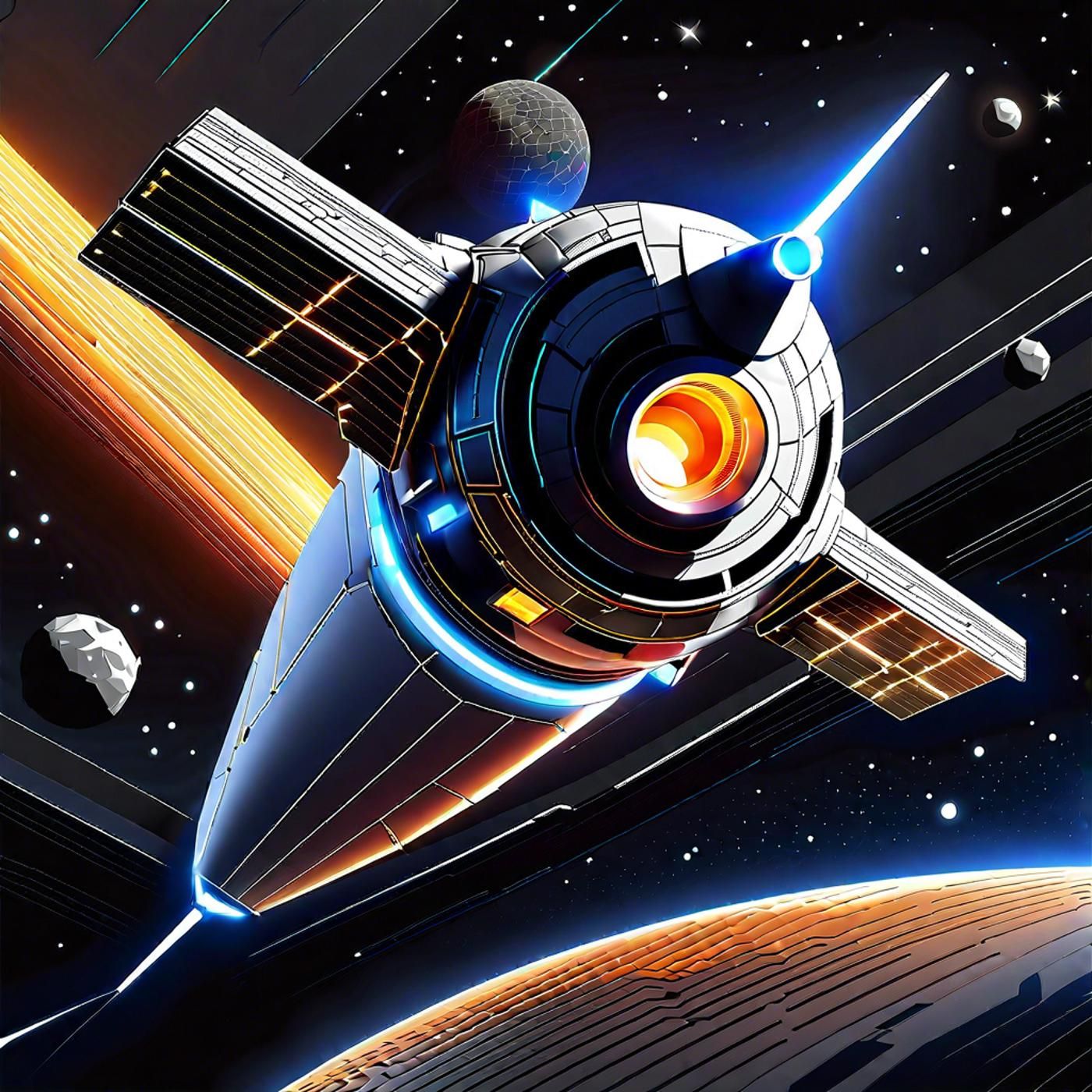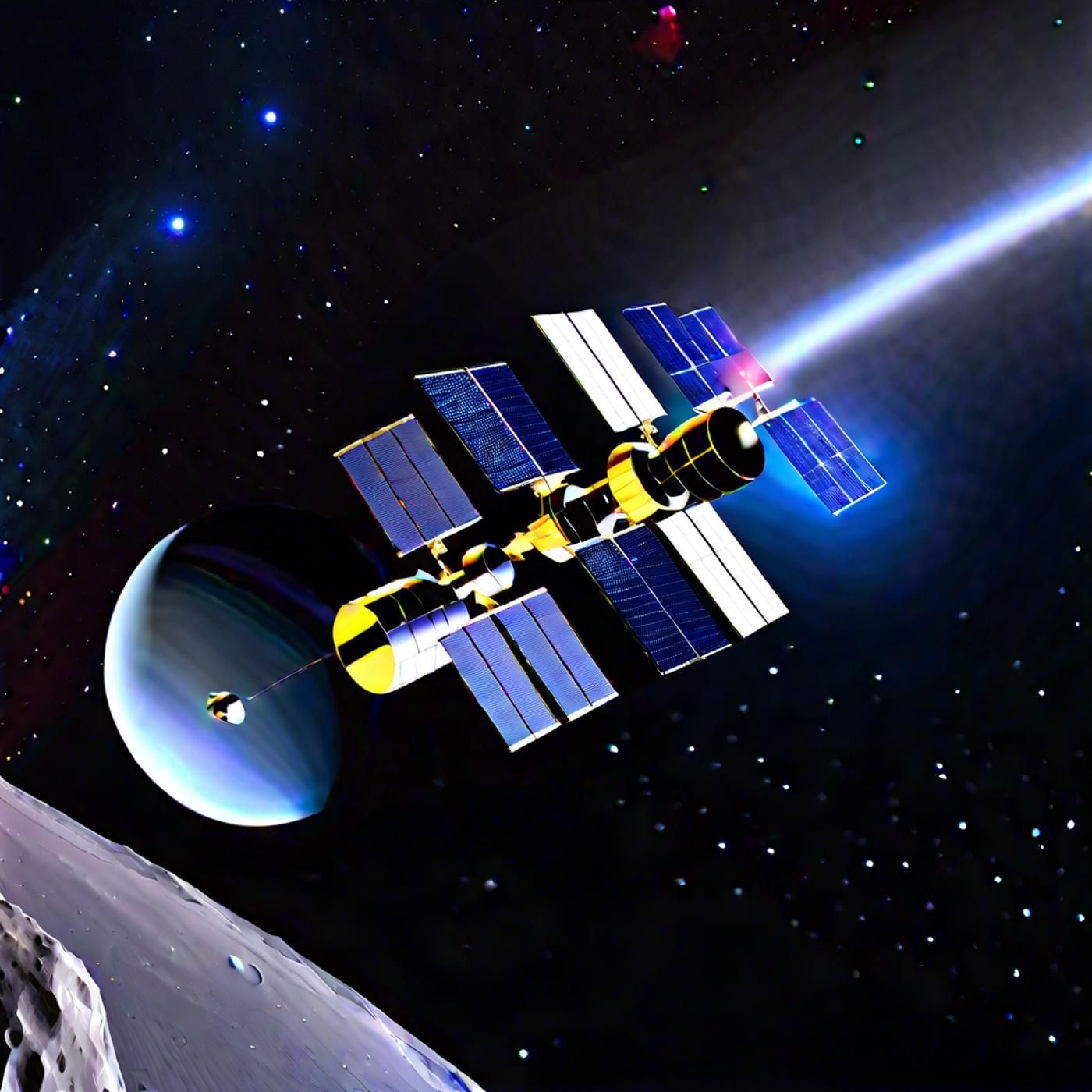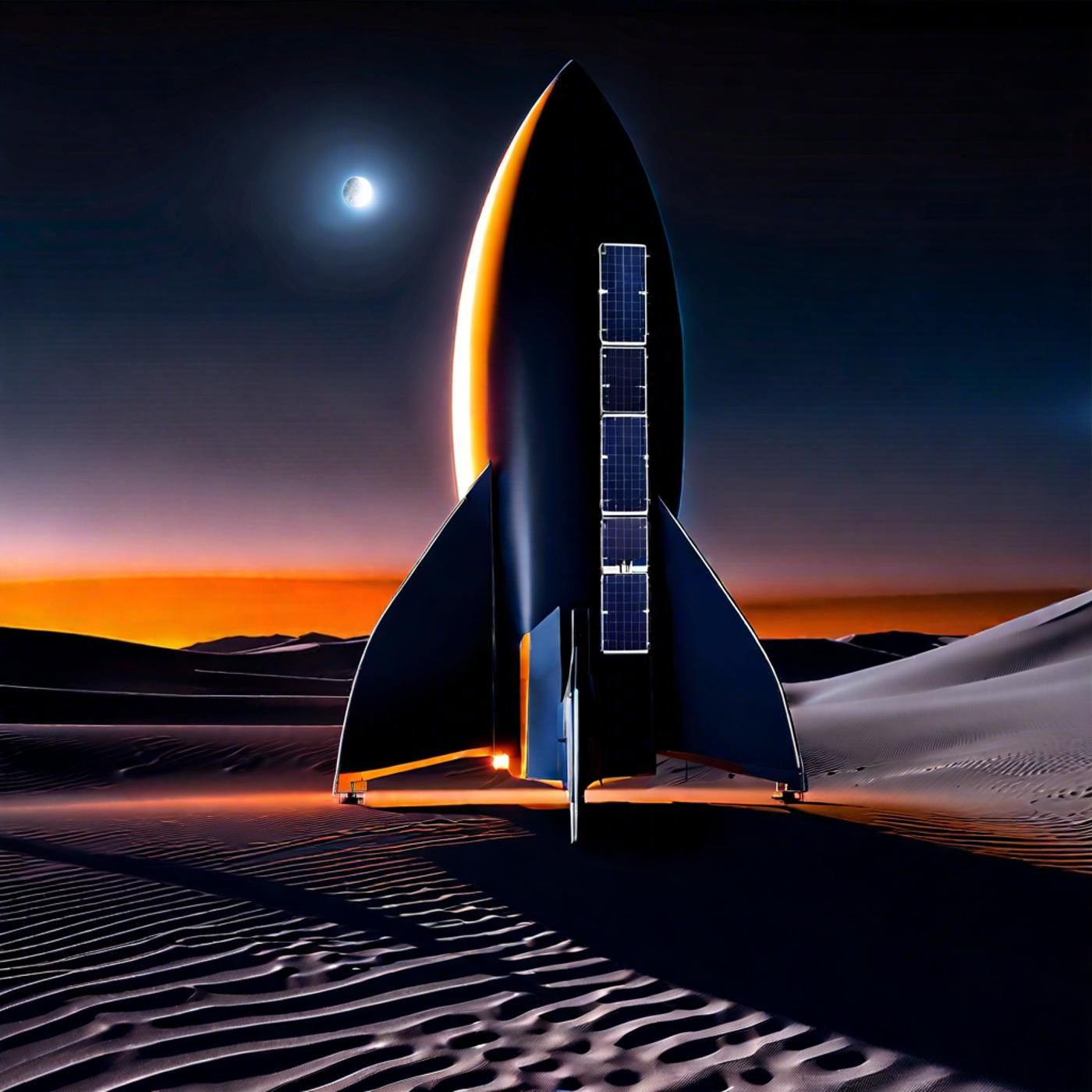S03E52: Hubble's Triple Star Triumph & Starliner's Stalled Ascent (Again)

Prepare to traverse the interstellar realm with today's episode of Astronomy Daily - The Podcast, where your cosmic navigator, Anna, unveils the universe's latest wonders.
Today, we're peering through the Hubble Space Telescope to glimpse a newly...
Prepare to traverse the interstellar realm with today's episode of Astronomy Daily - The Podcast, where your cosmic navigator, Anna, unveils the universe's latest wonders.
Today, we're peering through the Hubble Space Telescope to glimpse a newly discovered triple star system, navigating the complexities of Boeing's Starliner mission, and marveling at India's ambitious plans for Mangalyaan Two's Mars adventure. Join us as we delve into the effects of a massive sunspot on Mars and lay the foundation for humanity's lunar future with NASA's Artemis IV mission and the Gateway space station.
Fasten your seatbelts for a celestial ride through the cosmos!
(00:00) Welcome to Astronomy Daily, your go to podcast for the latest space news
(00:48) Hubble recently revealed a stunning image of the triple star system HP Tau
(02:35) First crew flight test for Boeing Starliner delayed due to helium leak
(05:47) Solar flare on May 14 could significantly impact Mars upper atmosphere
(07:30) NASA's Artemis four mission will herald a new chapter in lunar exploration
For an immersive experience of the universe, visit our website at astronomydaily.io, and join the conversation on X (@AstroDailyPod) for daily updates and celestial camaraderie.
Until our next cosmic journey, this is Anna reminding you to keep your eyes on the skies and your spirit of discovery alive. Clear skies and cosmic wonder to all our fellow space enthusiasts!
This episode is brought to you with the support of our galactic sponsors, including NordPass, the password manager you need in your life. It's the one we use and swear by. Get our special deal by visiting www.bitesz.com/nordpass. Check out all our great sponsor deals on our website.
Become a supporter of this podcast: https://www.spreaker.com/podcast/astronomy-daily-the-podcast--5648921/support.
AI Transcript
Welcome to Astronomy Daily, your go to podcast for the latest space news
Anna: Welcome to Astronomy Daily, your go to podcast for the latest updates and insights in the world of space and astronomy. I'm your host, Anna. Today we have some truly captivating stories lined up for you. We'll explore the discovery of a brand new triple star system courtesy of the Hubble Space Telescope. Delve into the latest updates on Boeing's much anticipated Starliner mission and hear about India's groundbreaking plans for its mongolian two Mars mission. Additionally, we'll discuss the massive sunspot AR 3660 four's impact on Mars. And finally look at NASA's ambitious Artemis IV mission, which includes building the Gateway lunar space station. So sit back and get ready for an exciting journey through the cosmos.
Hubble recently revealed a stunning image of the triple star system HP Tau
Exit you the Astronomy Daily podcast Hubble has recently revealed a stunning image of the triple star system HP TAO, HP TAO G two, and HP TAO G three. In a time when much of the astronomical world is focusing on the James Webb space telescope, Hubble is reminding us that it still has much to offer. The system includes young stars, with HP TAO being only about 10 million years old and yet to begin fusing hydrogen. These stars are surrounded by a reflection nebula located about 550 light years away in the Taurus constellation. Reflection nebulae like this are composed of interstellar dust that reflects the light of nearby young stars, giving them a characteristic blue hue. The image showcases intricate patterns of nebulosity that appear almost hollow, sculpted by the stars at their center. HptaU itself is a T Tauri star, a ah type of young variable star that's typically less than 10 million years old. These stars are often enveloped in the very gas and dust that formed them, showing both regular and chaotic fluctuations in brightness. These variations may be caused by complex processes in their still forming accretion, disks. This latest observation was part of Hubble's ongoing investigations into protoplanetary disks, which are potential precursors to planetary systems around stars. It's amazing to consider that the light captivating us in these images has traveled for 550 light years before reaching Hubble's optics. This finding is a stellar example of Hubble's enduring legacy in advancing our understanding of the universe. Despite being launched in 1990, Hubble continues to provide new insights and breathtaking visuals that inspire wonder and curiosity about the cosmos.
First crew flight test for Boeing Starliner delayed due to helium leak
The long awaited first astronaut mission for Boeing's Starliner spacecraft has encountered yet another delay due to a helium leak in the service module. Originally scheduled for May 21, the launch date has now been pushed to May 25. This mission, known as the crew flight test, aims to send NASA astronauts SUNY Williams and Butch Wilmore to the International Space Station for approximately a week long stay. The delay was prompted by a small helium leak identified in a reaction control system thruster. Although initial assessments indicated the issue was not critical, NASA and Boeing have decided to take additional time to further evaluate the leak and ensure that all systems are operating safely and effectively before proceeding with the mission. This rigorous approach highlights the meticulous preparation and safety protocols necessary for space travel. The spacecraft, set to launch atop a United Launch Alliance Atlas V rocket from Cape Canaveral, remains in the assembly building while continued assessments and potential repairs are carried out. Meanwhile, astronauts Williams and Wilmore are in quarantine in Houston, preparing to head to Florida's space coast when the launch date nears. CFT will be a pivotal milestone for the commercial crew program, with Boeing developing and flying the Starliner under a $4.2 billion contract awarded by NASA in 2014. The mission is eagerly anticipated, marking Boeing's first crewed flight and following in the footsteps of SpaceX's demo two mission in May 2020. Both NASA and Boeing are committed to ensuring success as they work through these final preparatory stages. India is making significant strides in space exploration with the upcoming launch of Mangalyaan Two, scheduled for a late 2024 launch. This mission is a follow up to the highly successful Mars orbiter mission, or Mangalyaan, which made India the first country to reach Mars on its first attempt. Mengalyaan, too, promises to be even more ambitious, featuring a complex array of instruments, including a rover and a helicopter reminiscent of NASA's perseverance and ingenuity duo currently on Mars. If successful, India will join an elite group, becoming the third country to land a spacecraft on Mars, following the United States and China, the mission aims to study the early history of Mars, analyze its atmosphere, and search for a hypothesized dust ring generated by its moons, phobos and deimos. Utilizing a supersonic parachute and a sky crane for its landing, Mangalyaan two will exemplify cutting edge space technology, further propelling India's status in the field of space exploration. Local reports have suggested an ambitious timeline, but several key components, like the multi instrument helicopter, sky crane, and supersonic parachute, are still under development. Despite the challenges, India's space agency, ISRO, remains optimistic about achieving these milestones. With the successful legacy of Mangalyaan and a futuristic array of instruments in tow, Mengalyaan two is poised to add another chapter to the storied history of martian exploration.
Solar flare on May 14 could significantly impact Mars upper atmosphere
Recent observations have spotlighted sunspot AR 3664, an enormous solar feature making headlines for its solar activities. This sunspot unleashed a substantial solar flare on May 14, significantly impacting Mars. The flare is expected to rapidly heat and ionize Mars upper atmosphere, a phenomenon that scientists are actively studying. According to doctor Ed Thiemann, a heliophysicist at the University of Colorado at Boulder's Laboratory for Atmospheric and Space Physics, the flare from AR 3664 is the largest observed by the maven spacecraft since its arrival at Mars in 2014. NASA's Maven and the Perseverance rover currently hold front row seats to this cosmic event. The flare could inflate Mars upper atmosphere by tens of kilometers and potentially generate a global scale aurora, a magnificent display for perseverance. Unlike Earth, Mars lacks a magnetic field to shield it from these supercharged particles, making NASA's study all the more significant. Events such as these offer invaluable insights into how the sun's activity erodes, Mars atmosphere over time. Moreover, this is not the first time Maven has witnessed such auroras. Previous solar storms have delivered similar light shows on Mars, enriching our understanding of the red planet's atmospheric dynamics. It's anticipated that this ongoing solar event will temporarily increase atmospheric loss on Mars, providing essential data to comprehend better the historical climatic changes that transformed Mars from a potentially habitable environment to the barren landscape we see today.
NASA's Artemis four mission will herald a new chapter in lunar exploration
The Astronomy daily podcast NASA's Artemis four mission will herald a new chapter in lunar exploration with the construction of the gateway, which will be humanity's first lunar space station. This mission serves as a cornerstone in NASA's long term strategy to establish a sustainable human presence on the moon and lays the groundwork for eventual missions to Mars. The mission will utilize an upgraded space launch system, SLS rocket, demonstrating NASA's continued commitment to advancing space exploration capabilities. The gateway will not only provide a platform for scientific research, but also act as a critical staging point for future lunar sorties and interplanetary expeditions. With docking ports for various spacecraft and living quarters for astronauts, Gateway's unique elliptical orbit will offer unprecedented access to the lunar surface and facilitate comprehensive scientific studies. Artemis IV is a giant leap forward, promising to transform our approach to space exploration and preparing humanity for the next frontier. Thank you for tuning in to astronomy daily. We hope you enjoyed today's fascinating updates on space and astronomy. If you want to stay even more connected with the latest developments, be sure to visit our website at astronomydaily IO. There you can find up to the minute news from our constantly updating news feed, learn how you can support the show, and listen to past episodes. We also love hearing from our listeners, so feel free to leave us a message on our site. Don't forget to follow us on X, formally known as Twitter. Just search for AstroDailyPod DailyPod to join our online community. Your interaction helps us bring you the best in astronomy news and insights. This is your host, Anna, signing off. Until next time, keep reaching for the stars.
New to Astronomy Daily - The Podcast?
Here are some great episodes to start with.



















